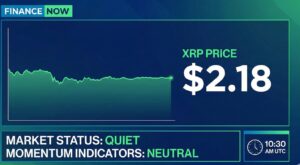In today’s world, making payments across borders has often been complicated and costly. Fortunately, due to the emergence of blockchain technology, people can now better navigate international transactions with this secure and efficient solution.
What Are Cross-Border Payments?
Blockchain-based cross-border payments involve two different parties transacting through blockchain technology in different countries. Before the advent of blockchain technology, people had to rely on cross-border payments facilitated by traditional institutions like banks and other financial institutions that served as a complicated network of middlemen. As a result of this somewhat long system, cross-border payments involve longer processing times, high transaction fees, and a lack of transparency in the payment process.
Blockchain-based cross-border payments changed the game because it removes the need for middlemen, decreases transaction fees, and foster a safe and secure payment process. This method offers faster solutions for business-to-business and person-to-person transactions, thereby changing international money transfers.
What is the process of cross-border payments using blockchain technology?
Blockchain-based cross-border payments offer many advantages over traditional transactional payments and settlements due to the unique system of blockchain and ledger technologies. International bank transfers are a process that typically involves a complex network of commercial banks, clearing houses, credit unions, and other financial institutions. This can make the process slower and more complicated for the sender and receiver. On the other hand, blockchain technology has smart contracts. Smart contracts are used to enforce cross-border payment transactions on the blockchain based on predetermined rules. This removes the need for intermediaries and, thus, provides transparent instant transactions.
What are the benefits of blockchain-enabled cross-border payments?
Cross-border payments offer various benefits such as:
- Fast transaction processing: Cross-border transactions currently have a nearly four to six seconds processing time.
- Lower fees: Blockchain transfers have become more affordable due to eliminating intermediaries and implementing improved scaling solutions.
- Transparency: Using blockchain ledger technology allows for automated record-keeping, ensuring transparency and verifiable records.
- Safe and secure transactions: Cross-border transactions are made secure through public-private cryptography, data hashing, multi-party authorization, and fraud detection smart-contract enablers.
What are the types of cross-border payments?
Business-to-business cross-border payments are exchanges utilizing blockchain technology between two businesses in different nations. These transactions involve goods, services, etc., and payments via cryptocurrencies, stablecoins, or fiat on-ramp solutions.
On the other hand, person-to-person blockchain cross-border payments are trades that take place between people in different countries. Some of these transactions involve sending funds to relatives and friends, buying goods and services, and other financial activities.
Takeaways
Blockchain technology simplifies the complexities of traditional-based cross-border payments. The decentralized and secure nature of this technology helps us participate in global transactions easily and removes obstacles, and promotes financial inclusivity. The use of smart contracts and cryptocurrencies further strengthens the foundations of blockchain-based payments, thereby ensuring swift and reliable transactions.




























